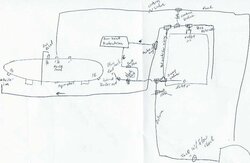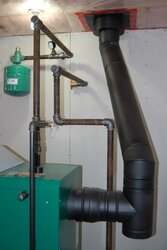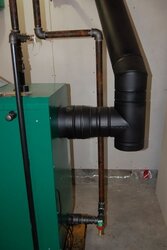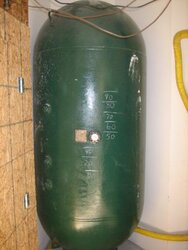Hi All,
I am in need of some advice on how you have installed you stove pipe to you 40. Mine does not seem to be the right size. I did notice that this was brought up before with no comments. I am hoping that someone will be able to give em an idea. This site has be great for other info. I am installing an EKO 40 with 500 gallons storage in an out building. The storage tank will be insulated to avoid the heat loss.
My 2nd question is when connecting to my current oil boiler, that will only be needed if the temps go low on the wood boiler, where should the connections be made. I am thinking on the input side of the boiler after the pumps but I am not sure if both connections would be there. I currently have an oil boiler with two zones. I am thinking of pulling water for the house directly out of the storage tank and having the returning water go to the boiler. This way in the summer I will be pulling directly out of the tank
My last question for now is what size expansion tank is being used for this type of system and where are they being installed? (near the tank or in the house)
I will post pics as I get them. Below is a rough sketch of my idea for the plumbing
Thanks,
Derek
I am in need of some advice on how you have installed you stove pipe to you 40. Mine does not seem to be the right size. I did notice that this was brought up before with no comments. I am hoping that someone will be able to give em an idea. This site has be great for other info. I am installing an EKO 40 with 500 gallons storage in an out building. The storage tank will be insulated to avoid the heat loss.
My 2nd question is when connecting to my current oil boiler, that will only be needed if the temps go low on the wood boiler, where should the connections be made. I am thinking on the input side of the boiler after the pumps but I am not sure if both connections would be there. I currently have an oil boiler with two zones. I am thinking of pulling water for the house directly out of the storage tank and having the returning water go to the boiler. This way in the summer I will be pulling directly out of the tank
My last question for now is what size expansion tank is being used for this type of system and where are they being installed? (near the tank or in the house)
I will post pics as I get them. Below is a rough sketch of my idea for the plumbing
Thanks,
Derek





